Why you can trust Tom's Hardware
The PSV27-2 comes ready to render accurate grayscale, gamma and color out of the box with no calibration needed. That said, it offers plenty of options for tweakers or those requiring color standards beyond DCI-P3.
Grayscale and Gamma Tracking
Our grayscale and gamma tests use Calman calibration software from Portrait Displays. We describe our grayscale and gamma tests in detail here.
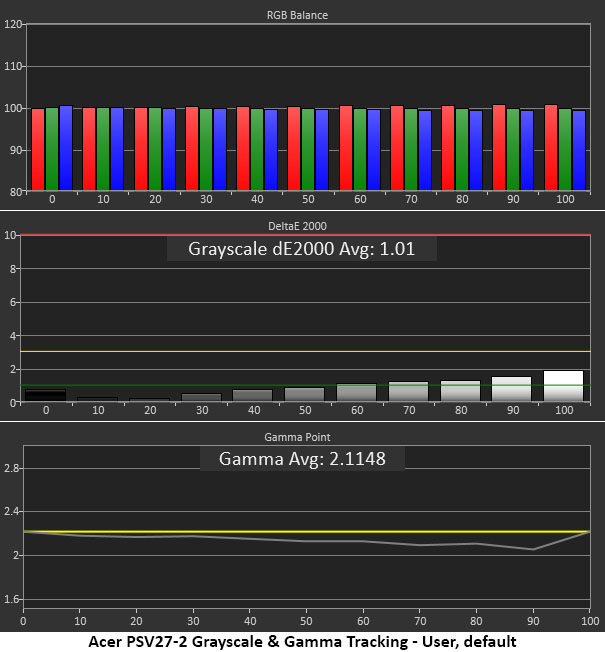
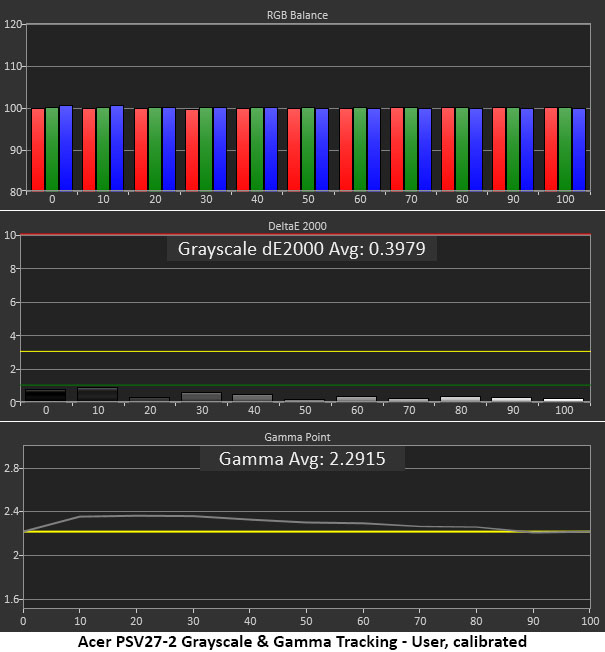
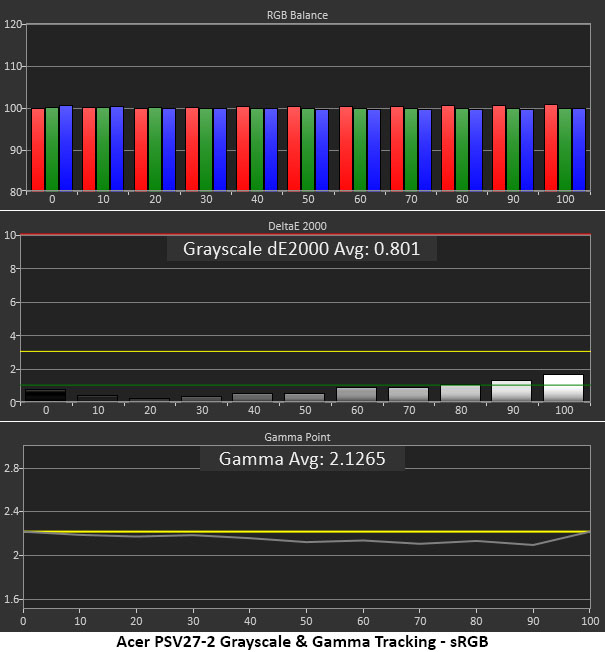
A grayscale chart, like the one above, is often enough for me to decide against calibration. But gamma runs a tad light so I wanted to see if I could improve that metric. There are no visible grayscale errors here with every value below 2dE, excellent out-of-box performance.
I made one-click adjustments to the green and blue gain sliders and changed the gamma preset to 2.4. It’s a compromise because gamma still isn’t perfect. Grayscale is though, with all values now below 1dE, which is reference-level. Visually, I prefer the darker gamma for its greater perceived contrast and color saturation. But the default 2.2 setting will be fine for many users.
The sRGB mode grays out all picture adjustments save brightness, but its grayscale is spot-on with slightly light gamma tracking.
Comparisons
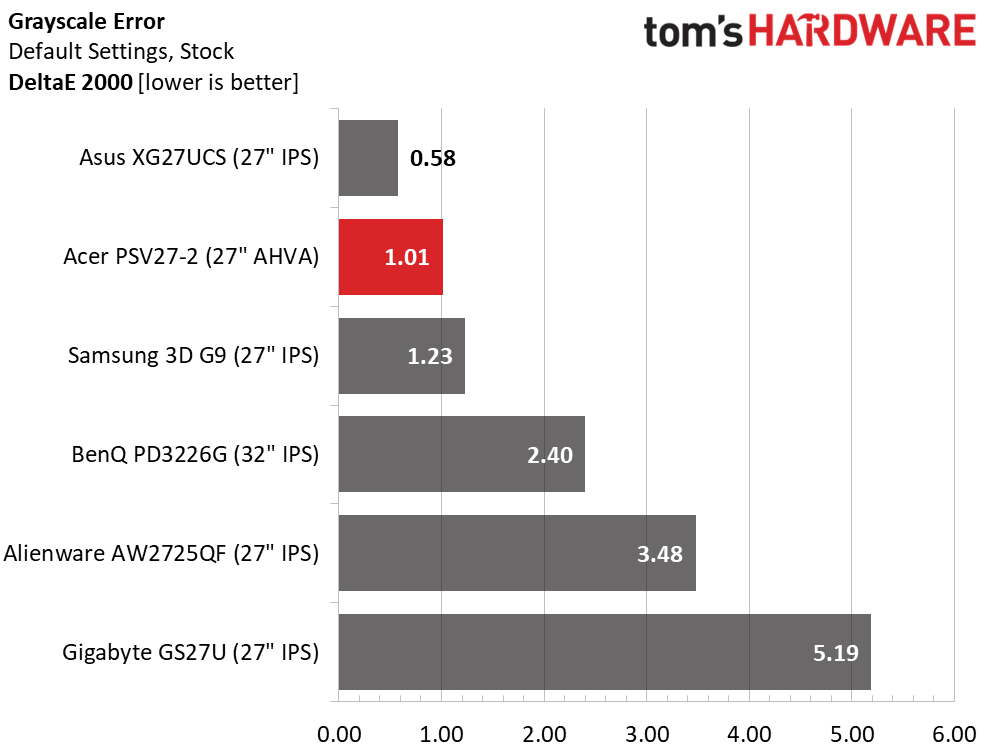


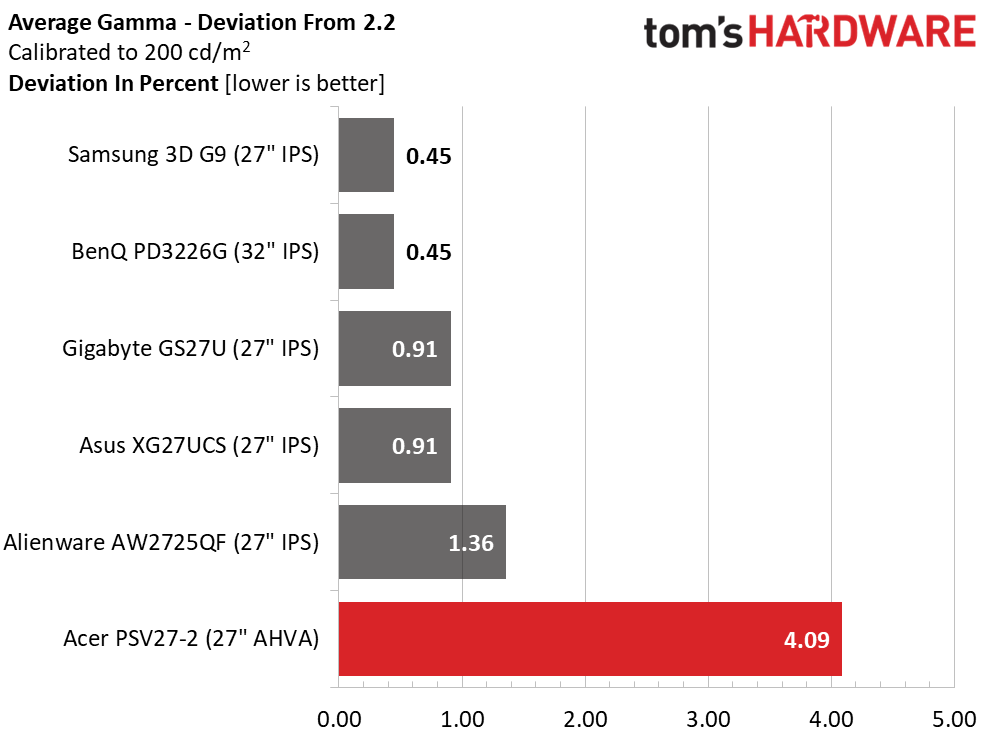
The PSV27-2 almost takes the out-of-box grayscale test with its 1.01dE score, but is pipped by the Asus with its 0.58dE result. This is a tiny difference that cannot be seen by the naked eye. Of the remaining monitors, the Alienware and Gigabyte require calibration, while the rest do not. After calibration, the PSV27-2 rises to the top with a reference level 0.40dE result.
The gamma compromise I spoke of earlier takes the PSV27-2 down in rank but still produces a solid and accurate image. A 0.15 range of values is tight, and the deviation is fair at 4.09%. I compromised here because, without adjustment, gamma is lighter and deviates by 4.54%. I’m nitpicking for sure, but the darker gamma looks better in my observation.
Get Tom's Hardware's best news and in-depth reviews, straight to your inbox.
Color Gamut Accuracy
Our color gamut and volume testing use Portrait Displays’ Calman software. For details on our color gamut testing and volume calculations, click here.
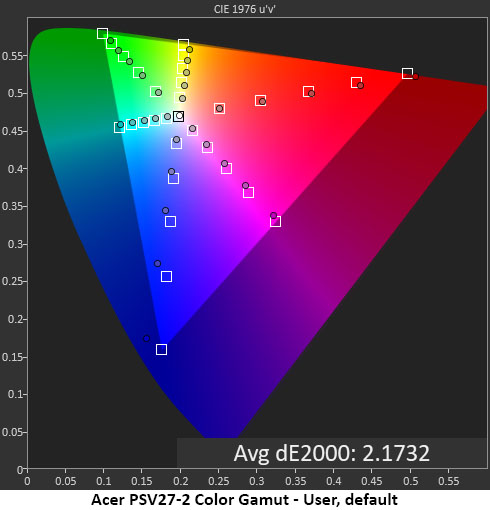
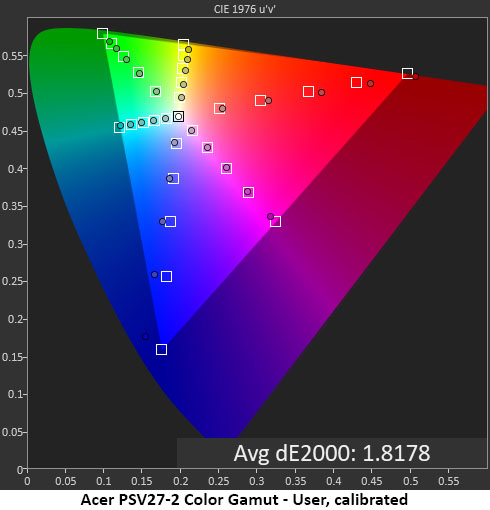
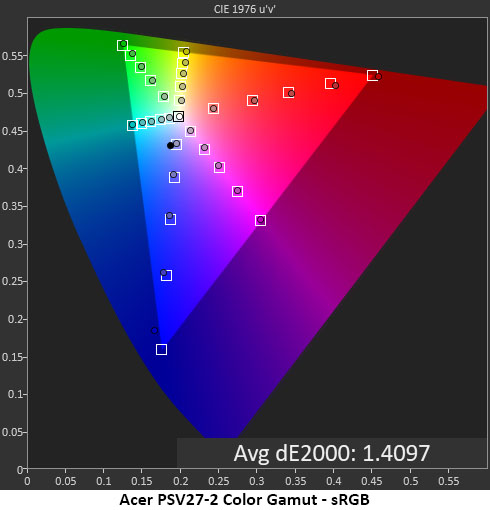
The PSV27-2’s default color chart shows nearly perfect tracking with only minor hue errors in yellow and slight undersaturation in blue and magenta. These are invisible errors supported by the low average of 2.17dE.
Calibration makes a slight improvement, but the visual difference is small. Color is excellent in either case. The sRGB chart is excellent as well, with just a bit of red oversaturation. The PSV27-2 is fully qualified for critical applications, such as color grading and video post-production.
Comparisons
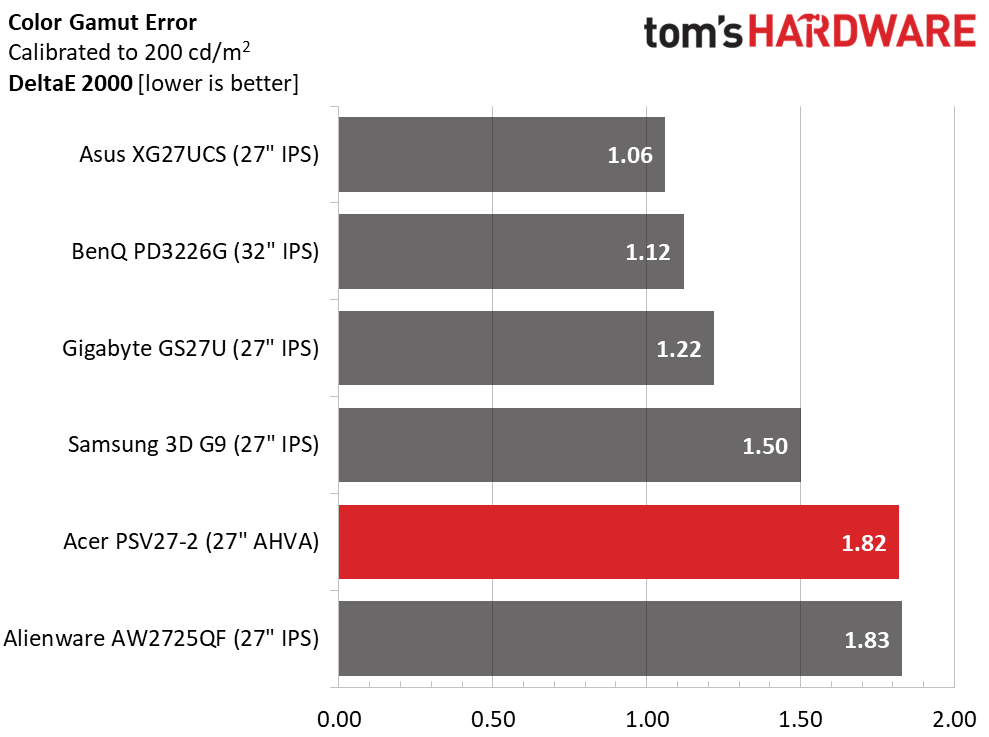
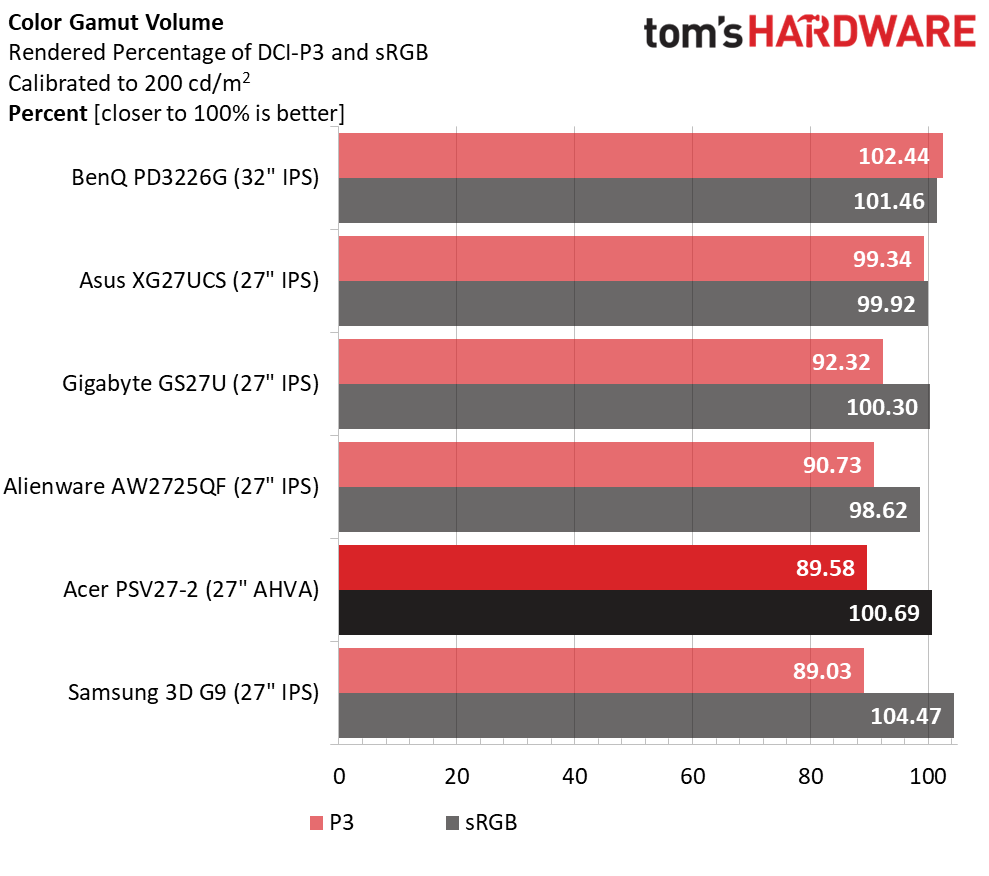
You won’t find a bad monitor here; all the screens have very accurate gamuts with wide coverage. The PSV27-2’s 1.82dE puts it in fifth place among a very tight group of professional-grade screens. Gamut coverage falls on the lower end of the average for the category. None of these displays have Quantum Dot tech, but the BenQ and Asus are closer to 100% with the PSV27-2 just shy of 90%. It has the same red and green saturation as the others, but gives away a little blue. Its 100.69% coverage of sRGB is ideal. It is qualified for graphics, video, and photography tasks.
Test Takeaway: The PSV27-2 doesn’t require calibration in any of its gamut modes and it renders all of them from sRGB to DCI-P3 to near perfection. Default gamma is a tad light but within spec. Some users like me will prefer the darker presentation that the 2.4 setting provides. These are tiny issues. The PSV27-2 is a pro screen all the way.
MORE: Best Gaming Monitors
MORE: How We Test PC Monitors
MORE: How to Buy a PC Monitor

Christian Eberle is a Contributing Editor for Tom's Hardware US. He's a veteran reviewer of A/V equipment, specializing in monitors. Christian began his obsession with tech when he built his first PC in 1991, a 286 running DOS 3.0 at a blazing 12MHz. In 2006, he undertook training from the Imaging Science Foundation in video calibration and testing and thus started a passion for precise imaging that persists to this day. He is also a professional musician with a degree from the New England Conservatory as a classical bassoonist which he used to good effect as a performer with the West Point Army Band from 1987 to 2013. He enjoys watching movies and listening to high-end audio in his custom-built home theater and can be seen riding trails near his home on a race-ready ICE VTX recumbent trike. Christian enjoys the endless summer in Florida where he lives with his wife and Chihuahua and plays with orchestras around the state.
